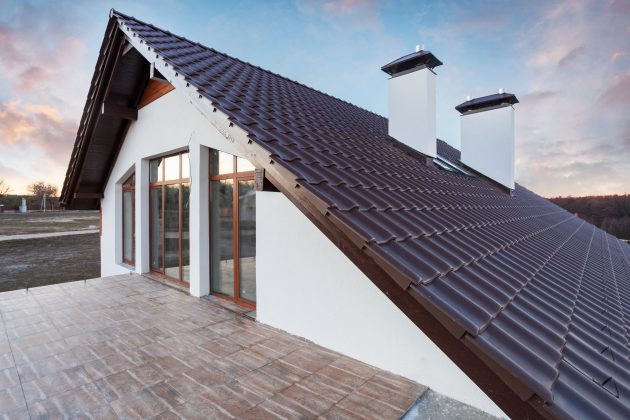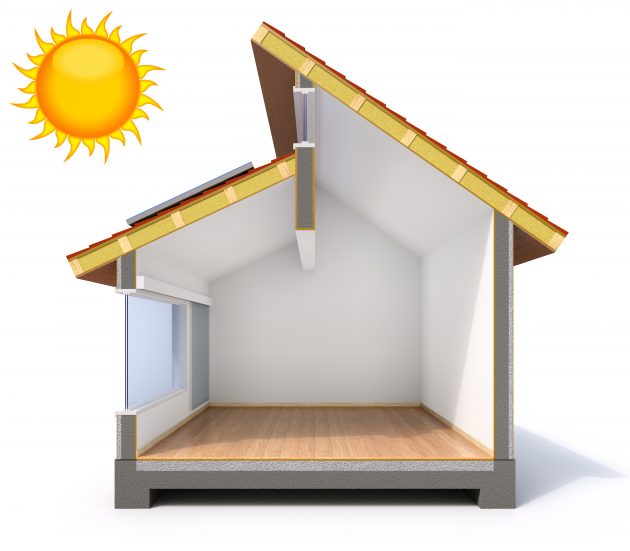Humans have utilized solar energy for over a thousand years, especially for food preservation. In the last few centuries, though, humans discovered new ways to utilize solar energy, like for industrial use. As technology developed, the benefits of utilizing solar energy to power home operations have been more evident.
For most homeowners, the considerable savings they’ll get leads them to switch to solar energy. For some, there’s no better reason than protecting the environment, especially with the brunt of climate change, global warming, natural calamities, and other environmental concerns we face today. However, you might not be ready yet to install a self-sustaining solar system, but this shouldn’t worry you even a bit, as you can still enjoy the benefits of solar energy without installing a solar system in your home. From no-cost to low-cost, homeowners can capture and utilize solar energy in many ways.
This article discusses what you need to know about passive solar energy. You’ll learn the definition of passive solar energy, how to utilize it, and more.

What Is Passive Solar Energy?
Passive solar energy directly uses the sun’s energy for cooling or heating purposes. It bypasses the need to use mechanical or electrical means to harness and utilize solar energy. In new homes, the owner doesn’t need to install a boiler or solar panel to utilize the sun’s energy. Instead, materials and windows available may allow the homeowner to collect, absorb, and distribute solar energy throughout the house. Passive solar energy relies on the law of thermodynamics, which posits that heat energy is transferred from warm to cool surfaces through convection.
You can choose from several service providers, which can be challenging if you don’t have the necessary know-how. You may also consider visiting sites such as https://www.smartsolarenergyco.com to learn more about solar energy. However, ensure you conduct enough background checks to guarantee you choose a reputable vendor, giving you value for your money.
What Are The Differences Between Active And Passive Solar Energy?
The major difference between active and passive solar energy is that passive solar heating doesn’t require a specialized system to capture and distribute the sun’s energy throughout the house. On the other hand, active solar energy requires specialized equipment like solar panels to capture the sun’s energy to augment heating systems.
Another difference is that active solar heating might be more costly than passive solar. This is because active heating requires specialized equipment, which is expensive to purchase, install, and maintain. However, passive heating might require a special building design with higher upfront costs.
How To Use Passive Solar Energy In Your Home
You can use passive solar energy to heat and cool your home in several ways:
1. Shading Technology
This is one of the ways you can use to harness and utilize passive solar energy. Shading technology describes additions to a home that prevent the overheating or cooling of a room. These may include roof overhangs, deciduous trees, and more. However, shading is not a new concept. It’s one of the efficient ways to take advantage of passive solar energy that has been around for many years. These shading technologies are as follows:
- Wide Overhangs
Overhangs are roof extensions that go beyond the wall of a home. These roof extensions are designed so that the overhangs block the sun’s rays from heating your living space during summer. During winter, when the sun hangs lower, the overhang won’t block the solar energy from heating your living space. Yet before installing overhangs, ensure you understand the height and elevation of the sun during the summer and winter seasons in your locality. Thus, installing the ideal overhang for your home will be easier, taking advantage of passive solar energy.
- Deciduous Trees
Planting deciduous trees can play a huge role in controlling the temperature of your home. The first step is to identify which windows receive a large amount of sun’s energy and plant deciduous trees near them. So how does it work? Deciduous trees have leaves during summer. Thus, they will absorb most of the sun’s rays, limiting the amount that enters your living area. Meanwhile, the trees will shed their leaves during winter; thus, most solar energy will enter your room, warming your home.
2. Use Thermal Mass Materials
This is another way to use passive solar energy to your advantage. Thermal mass materials refer to construction materials that have the ability to harness, store, and distribute heat energy. Thermal mass plays a huge role when utilizing both passive heating and cooling of homes.
Examples of thermal mass materials include brick, concrete, stone, water, and more, but perhaps the most commonly used are concrete floors and walls. When designing your passive solar home, these materials should be placed in a section where they receive the optimum amount of the sun’s energy. Hence, conduct extensive research to identify the direction of your home to the sun throughout the year.
Thermal mass materials are mostly utilized when there is a difference in temperature between daytime and nighttime. If there is no significant difference, thermal mass will be underutilized and won’t serve its purpose of controlling extreme room temperature.
During high temperatures, thermal mass can absorb and store heat energy, which will be released during low temperatures to warm the living space. For passive cooling, thermal mass will absorb much of the sun’s energy, keeping your home cool. Then, the absorbed energy will be released out of the building using a ventilation system. Moreover, the thermal mass may absorb low temperatures, which could be released during high temperatures to cool the room.
There are several factors you should consider when choosing thermal mass materials. These include:
- The material’s density plays a huge role in determining the amount of absorbed energy. For instance, heavy and dense materials can absorb and store more heat energy than lighter materials such as wood.
- Heat Conductor. When using thermal mass, only a part of the material is exposed to sunlight. Thus, choosing a reasonably good heat conductor is vital to allow the flowing in and out of energy.
3. Install Passive Windows
The aim of passive windows is to achieve two goals: reduce heat loss in and around glass areas and absorb solar energy through solar irradiation. Passive windows have several characteristics to help them achieve these goals. They include:
- Orientation
The position of your passive windows will play a significant role in influencing its effectiveness with the sun rising in the east and setting in the west, regardless of whether you live in the southern or northern hemispheres. Therefore, your windows should face the southern side to utilize most of the passive energy. Installing southern-facing windows will allow your home to absorb most energy during winter to heat the living space. During summer, shading technology such as overhangs will block the sun’s rays from heating your inside space, keeping it cool.
- Thermal Break
This is another characteristic of passive windows. Thermal break refers to a plastic or non-metallic barrier separating the window’s exterior from the interior. This barrier creates a thermal energy loss resistance, helping regulate the temperature inside your living space.
- Airtightness
The discovery of gaps, fissures, and more when fixing windows may cause unwanted heat loss and gain. So, ensure they’re airtight to prevent these from happening when installing passive windows. Glass coatings will also enhance the energy efficiency of your windows by creating an airtight barrier between the inside and outside of the window.
What Are The Benefits Of Passive Solar Energy?
The following are the advantages of utilizing passive solar energy:
- Lower Noise Pollution
As mentioned above, active solar energy may require specialized systems such as loud machinery, which could cause unwanted noise. This pollutes the environment and may also distract your workforce, affecting the production line. Passive energy, meanwhile, eliminates the need for loud machinery, reducing noise pollution and related issues.
- Boosts Home Value
Today’s modern times have led more and more people to realize the need to utilize green energy sources. Installing thermal mass materials, passive windows, and shading technology may play a significant role in improving and leveling up the value of your home. This is because most people are more willing to purchase a home with already installed passive energy than one without.
Affordability
This is another benefit of utilizing passive energy to heat and cool your home. Purchasing solar equipment, such as solar panels, might have a higher upfront cost. They also require routine maintenance, which increases the cost of absorbing and distributing solar energy. Furthermore, passive solar energy doesn’t require specialized equipment to heat and cool your home. Instead, it’s incorporated into your house design.
Bottom Line
As discussed here, more and more homeowners have realized the benefits of utilizing solar energy. However, if you’re not ready to install a solar system, you can still enjoy the benefits of solar energy without one. With so many ways you can take advantage of passive energy, what is left is to research more to identify ways to include it in your home setup.















